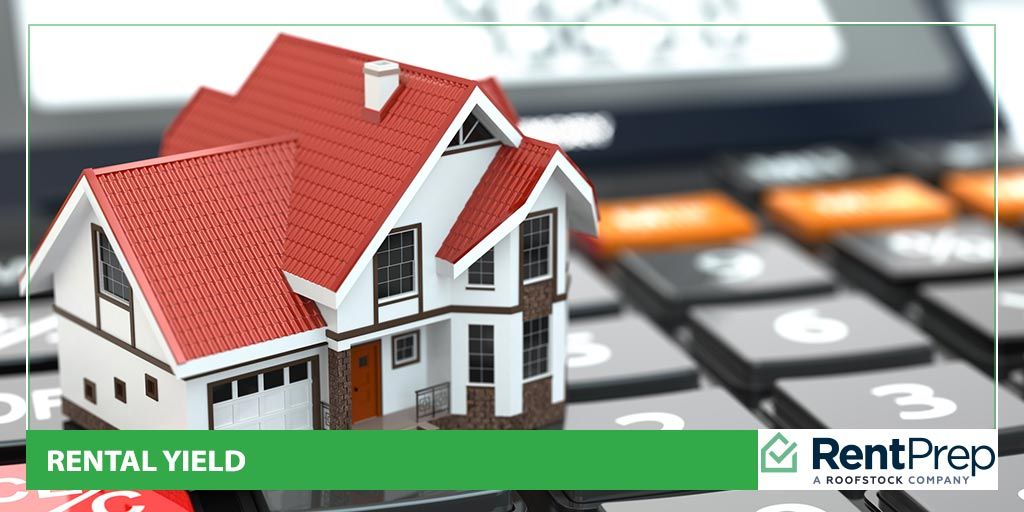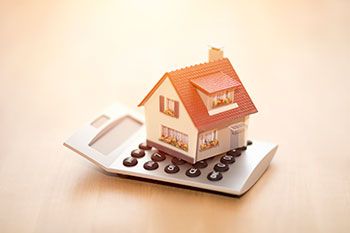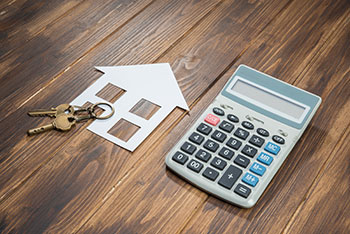
Owning rental property isn’t all it takes to grow your rental business. Analyzing your properties, markets, and plans is also essential to long-term success. Rental yield is one of the best calculations landlords use to calculate how much they make from their properties.
What is it about rental yield that is so powerful?
The rental yield calculation is helpful at many stages of the rental process. From choosing rental investment properties to effectively improving underperforming units, this number can guide your next steps. Without a guide, you may be pouring money into the wrong parts of your business and wondering why your bottom line isn’t improving.
Don’t move forward without guidance any longer. Learn how to calculate rental yield today with my simple guide and formula. You’ll be ready to put it into action immediately.
A Table Of Contents On Rental Yield
Rental yield may be just one calculation, but that calculation brings together multiple pieces of data that are key to your success as a rental business owner. Follow along with this rental yield guide to learn more:
- What Is Rental Yield?
- Why Is Rental Yield An Important Calculation For Landlords?
- Rental Yield Calculator: Create Your Formulas
- Beyond Rental Yield
- Rental Yield FAQs
- Rental Yield: More Than “Good” Or “Bad”
What Is Rental Yield?

Essentially, rental yield is a percentage that represents how much money you will likely make on a rental property. By comparing the rental income with the property’s cost or value, you can determine what type of profits the rental will generate.
This percentage is one way to measure the investment property’s return. Whether you’re a new landlord or working on honing your large investment portfolio, rental yield is useful for understanding what is and is not profitable.
Gross vs. Net Rental Yield
There are two types of rental yield used by landlords and investors: gross rental yield and net rental yield. While similar, these two calculations use slightly different data and serve varying purposes.
Gross rental yield looks at potential return. It does not take into account expenses or operating costs; it simply considers rental income against the property’s value.
Net rental yield, also known as the cap rate, incorporates these missing expenses into the picture. Landlords use this when they need a more specific, accurate view of the real-time rental yield of any given property. Expenses added to this calculation may include management fees, mortgage fees, maintenance costs, insurance, and more.
The majority of properties will see a net yield around 2% lower than their gross yield. When investigating new investment opportunities, you can use this information to predict a property’s true profit stream.
Rental Yield vs. ROI
If you weren’t previously familiar with rental yield, you might be thinking it seems a lot like return on investment (ROI). And it’s true–both of these evaluations focus on profitability and return.
The most significant difference between these two calculations is the time period utilized in the formula. Return on investment is a retrospective term that looks at the appreciation actually earned during a certain period and how it compares to the actual money invested.
Meanwhile, rental yield looks to the future. It doesn’t consider capital gains or other changing factors and instead assumes consistent rent will come in to develop a specific yield. Both calculations are valid, but they serve different purposes for landlords.
Why Is Rental Yield An Important Calculation For Landlords?
There are several reasons why it’s a good idea to add rental yield to your management portfolio.
#1: Confirm Income Potential
Using rental yield can help you make decisions about potential investment properties. Data available about properties can help you estimate their earning potential through rental yield. This allows an understanding of whether or not the property would be profitable for your investment plans.
#2: Identify Loss
Looking at current rent rates compared to property value regularly is a great way to stay on top of your investment profitability. Not all properties will remain profitable over time, and it’s important to consider if it might be time to unload a property. Using rental yield to look towards the next year is an excellent way to refine your business plans.
#3: Improve Your Properties
If your investment properties have a low rental yield, it’s time to make changes. Rental yield lets you know that something isn’t working; it’s up to you to figure out what to do to improve the return you get from your investment.
Common ways to improve yield include:
- Improving the property to justify higher rent
- Ensuring you choose high-quality tenants for lower turnover rates and repair costs
- Installing efficient, high-quality appliances for lower operating costs
- Streamlining management and contract processes to save money
The exact solution to your yield problem will, of course, be specific to your business, but these can be great points to start with if you are unsure what issues exist.
Rental Yield Calculator: Create Your Formulas
As I touched on earlier, there are two main types of rental yield, and they are both useful in their own right. It’s time to learn how to calculate these two types of rental yield: gross and net.
Calculating Gross Rental Yield
The formula for gross rental yield is simple:
- Gross rental yield = (annual rental income / property price) x 100
This calculation will give you a percentage that represents the gross rental yield. The property price should include all closing costs. You can also use current property value as an alternative to see the rise or fall of a property’s rental yield according to the changing market.
Calculating Net Rental Yield
Net rental yield’s formula adds in an essential part of business planning: your expenses.
- Net rental yield = (Annual rental income – operating expenses) / property value x 100.
Operating expenses should include management fees, maintenance costs, utilities, and any other required expenses to maintain the rental.
Beyond Rental Yield

Rental yield is a valuable piece of data for analyzing your business and identifying pain points. However, it is not the final solution to any problems. Rather, rental yield should be utilized for the perspective it provides.
If the rental yield on your properties is lower than expected, consider what may be contributing to this. For example, low rental income will reduce your overall yield percentage. Your rental income could be low due to limited demand in your market, a lack of renovations, or high turnover rates.
Take rental yield as an indicator of what’s going well and what could be improved.
Avoid Vacancies With Better Tenant Screening
One of the best ways you can reduce the number of vacancies at your properties, and thus improve rental yield, is to improve your tenant screening process. Tenant screening is essential when sourcing reliable, long-term tenants, but it’s also a learned skill.
Assist your tenant screening process for fast improvements with a high-quality tenant screening company. Tenant screening here at RentPrep includes various services, including background checks, credit reports, and credit checks. Check out the packages and services available and start with better screening today!
Rental Yield FAQs
What is the formula for rental yield?
There are two formulas for rental yield depending on whether you want to calculate gross rental yield or net rental yield.
To calculate gross rental yield, you want to divide the annual gross rent by the property value. To get the percentage, multiply this number by 100. This gives you the total amount of income generated by a property in proportion to the property’s value, which in turn gives you a picture of how successful and valuable the property may be.
Net rental yield is a more accurate yet more complicated way of assessing investment properties. This version of net yield includes other expenses besides the purchase price to ensure the rental yield depicts reality.
To calculate net rental yield, you will need to add up property insurance, maintenance costs, vacant period losses, agent and advertising fees, and any mortgage costs. Subtract this total from the annual gross rent and divide it by the property value. This gives you the net rental yield rate when multiplied by 100.
What determines a good rental yield?
Generally, landlords and investors aim for rentals with a rental yield between 5% and 8%. That being said, every landlord has their own preference, and the exact goal for their business may vary by location.
Rental yield must be looked at within the context of the property and the rental situation. High rental yields are often found in areas with low property costs, but vacancies can be a big risk factor. Sometimes, seemingly good rental properties present high rental yields but actually have expensive, hidden costs. That is part of why investors often use net rental yield before making final decisions on any property.
The real power of the rental yield calculator lies in understanding what it is showing you. You can use the number as a guideline for your business, but it should not be the basis of your entire investment plan. Instead, utilize it as one tool in your larger toolkit.
What other formulas are useful for landlords?
Rental yield is not the only calculation you can use to analyze and improve your rental business. The same data used to calculate rental yield can be used to calculate various useful data points.
First, ROI, return on investment, is a similar calculation to rental yield that focuses on what has actually been earned and is done in a retrospective manner. Landlords use this number to analyze performance and look for areas that need more attention.
Next, cap rate calculations allow you to approach net rental yield in another way. Dividing the property value by the net operating income shows the net return that a property generates in a specific, concrete way.
And finally, net operating income, abbreviated as NOI, is an essential number in many of these calculations. This number tells you how much income a property makes after paying necessary expenses. In particular, landlords can use NOI to know how much fluid cash flow they have at any given time.
You can also utilize capital appreciation calculations, comparing ROI over time, to see how investments grow or lose value. There are many different calculations out there that can be valuable to landlords. The key to success in your business is to determine which will help you reach your goals and fit your investment situation.
How do I know if my rental property is profitable?
Simply measuring if your overall net operating income (NOI) is higher than your monthly costs will show you if you are profitable month-to-month. To understand if you are profitable long-term, you will need to use a calculation that considers the initial investment costs and monthly expenses to maintain the property.
Ultimately, you have to determine what a “profitable” investment property is within the scope of your business. Are you looking to have passive income for a long time, or are you looking to improve the value of houses throughout tenancies to sell for a profit? The goals of your investment plans determine what profitability means.
Once you understand your investment goals, you can measure profitability using calculations like rental yield, ROI, cap rate, and gross rent multiplier. These data points help give perspective on the financial standing of your rental properties. In most cases, landlords are satisfied if the monthly cost is 1% or more of the property and renovation costs.
Rental Yield: More Than “Good” Or “Bad”
Like all business calculations, this one number isn’t going to give you all the answers. Instead, rental yield is a useful calculation to frame a property’s outlook in the grand scheme of your business plans.
After calculating the rental yield for one or all of your properties, answer the following:
- Does the property fit in with your investment portfolio?
- Would the property outperform at least 50% of your current properties?
- Have you balanced the rental yields based on demand according to their local markets before comparing?
- Is there a specific rental yield that reads “successful” among your properties that you can use in future calculations?
Your investment strategy is key to the analysis of rental yield. In your business, 3% might be the sweet spot; others may need to look for 7% to see success. Understanding what rental yield represents and how to implement this comparative value will allow you to utilize this tool effectively. Help your business keep flourishing with rental yield.

